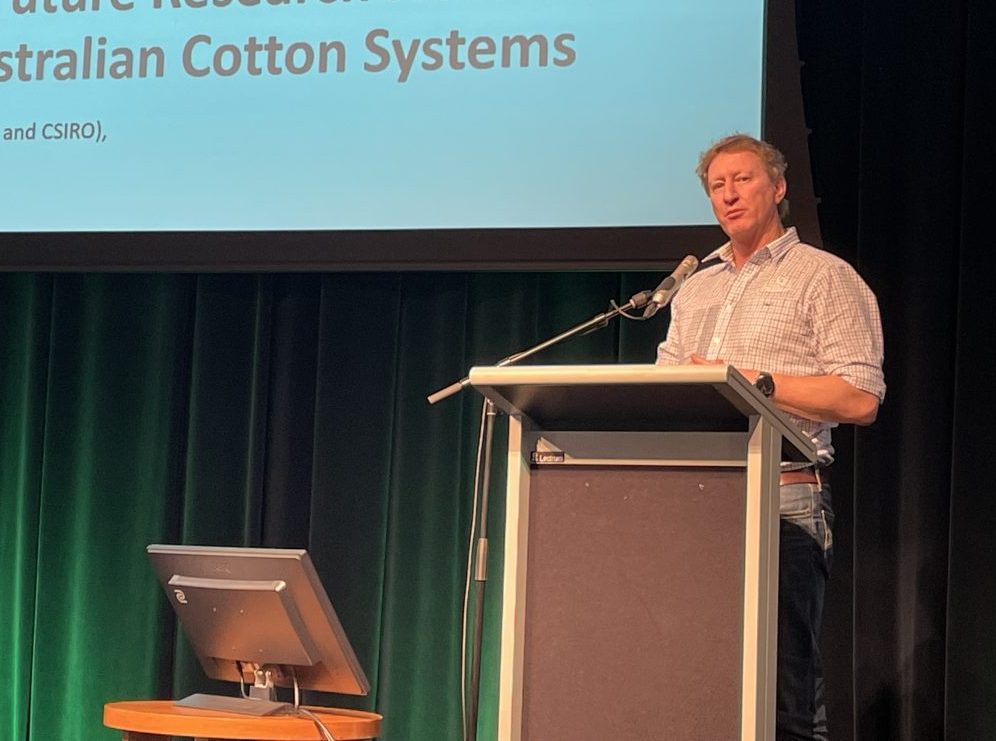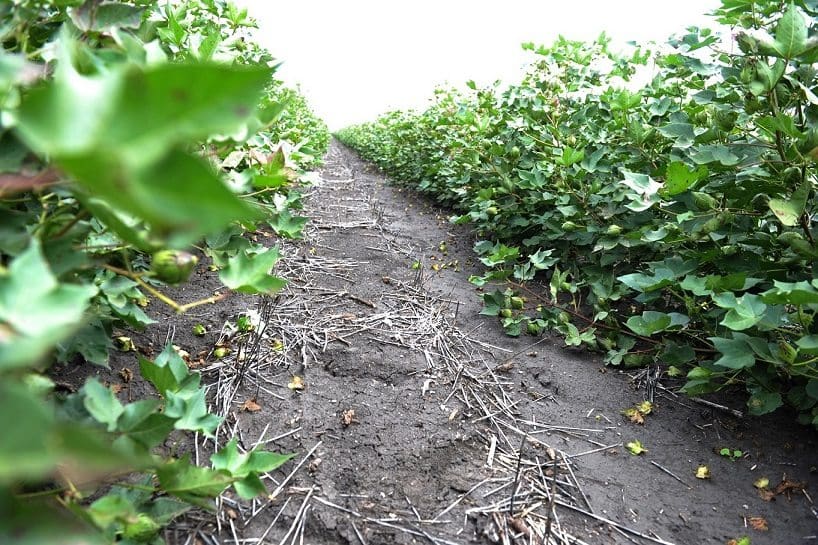
Dr Mike Bange told the Australian Agronomy Conference that an integrated and interdisciplinary approach will be key to the future of cotton agronomy. Photo: Emma Alsop
AN INTERDISCIPLINARY, integrated approach to cotton agronomy and production will be needed to overcome future challenges to the industry, according to Cotton Seed Distributors commercial research manager Mike Bange.
Dr Bange spoke at the Australian Agronomy Conference last week in an address titled Evolution and future research needs for progressing Australian cotton systems.
“The thing that I have recognised is that often it is about investing at the intersections rather than in the disciplines per se to make these things happen,” Dr Bange said.
“We have had people who have been agronomists working in the textile space; we have had breeders working in physiology and molecular biology space and vice versa.
“They need to be able to walk in both worlds to understand what is going on.”
Mr Bange said a key example of this was the emergence of digital agronomists, who have both plant knowledge and digital skills.
“There are lots of great tools out there collecting lots of data and what we need to do, again thinking about investing in the intersections, is create the role of the digital agronomist.”
He said these professionals were needed to provide advice and outcomes from datasets.
“It was really about getting…the person in place who can wrangle this data and bridge those divides.”

The introduction of Bt cotton has been a key step in reducing the impact of pests such as Helicoverpa moth.
Learnings from Bt cotton
Dr Bange said the successful introduction of transgenic or Bt cotton in the mid-1990s and second-generation variety Bollgard 2 demonstrated the importance of interdisciplinary approaches to achieve positive outcomes.
He said this new technology offered huge benefits for the cotton industry, but also brought challenges for agronomists.
Dr Bange said during the Bollgard 2 trial work, agronomists found the plant had higher fruit loads than previous varieties, which although generally positive, affected the crops’ overall yields.
“We went from having cotton plants that were losing fruit all the time to suddenly having plants with high fruit loads, and that was not something we had experienced in the Australian cotton industry before.
“While high fruit retention was seen as a great thing, it was seen as a real challenge if we were going to have things with high fruit loads and lower yields; we were certainly going to have challenges getting growers to adopt it.”
He said experts across disciplines from agronomists, physiologists, entomologists and plant breeders came together to make drastic changes in crop management, and determine which breeding lines were progressed.
Dr Bange said this approach enabled the research to move from regulated trials to large-scale projects the day after the Australian Government approved the variety’s release.
“It was only through this integrated approach that we had this thinking in place long before the commercial release of Bollgard 2.”
Tree traits noted
Dr Bange said the cotton industry needs to take this approach when it works to tackle some of the emerging challenges in producing the crop.
He said alongside pests and diseases and the rising cost of production, climate change was becoming a major concern for agronomists and growers.
He said researchers were having to balance these demands with the continued focus on increasing average annual crop yields.
“In recent times, a lot of the analysis we have done is on the things we need to do to drive high yields
“The startling thing that came out of that analysis was the level of nutrition needed to raise those yields.”
However, Dr Bange said this increase in inputs, along with rising temperatures and carbon dioxide levels, were having a big impact on crop growth.
“In a high-input system, when we are talking about lots of nutrition, lots of water and high CO2…the irony is that these sorts of things are going to make this thing want to grow more rapidly and grow more like a tree.”
He said in these cases the crop develops upwards and “doesn’t want to grow lint”.
Dr Bange said an integrated approach to future research was needed to prevent this phenomenon from becoming more widespread.
“We are going to need integrated studies on temperature, CO2, and water to understand those dynamics.
“You are going to need new thinking on growth regulation, and we are going to need new genotypes.
“The irony there is we have been pushing for more indeterminate genotypes to deal with the higher fruit loads, but you take an indeterminate genotype into a future climate-change environment and this thing grows rank.
“We may need more determinate varieties as we go forward and then mixing that up with different management options.”
Dr Bange has been involved in cropping systems research for over 27 years, including at the Grains Research and Development Corporation and CSIRO.
The 20th Australian Agronomy Conference was held in Toowoomba from September 18-22.
Grain Central: Get our free news straight to your inbox – Click here

HAVE YOUR SAY